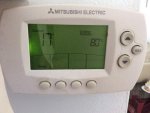First and foremost I just like simple. It seems simpler to replace the controller than graft another system onto it which talks to it over a data bus via a reverse engineered protocol. If you go the scanner route you wind up with two ECUs, a harness (which leaves you soldering up more wires than my ECU proposal anyways), and you have to find some place to stick the scanner. Which granted is not exactly a difficult challenge in a military truck, but now how long is the harness wiring?
The buttons all seem to wear out on the stock controller. Mine's certainly cracked and that seems pretty par for the course in the used ones I have seen.
Then the things already mentioned; no feedback about current status / valve configuration on the stock unit, no ability to manually actuate valves for testing, no ability to read the PSI off the pressure sensor (which required coordination with the valves), no ability to set the desire to fine-tune the desired PSI, human-readable errors limited to blink codes too granular to be useful (5 leds blink - thanks ecu!), no ability to configure quick set-points (sand,xc,hwy) without a diagnostic tool.
I've never seen a CTIS controller for $60 that wasn't all banged up with cracked plastic on the buttons. Look at prices for NOS replacements. And every day there are less of these, not more. What I propose would be a brand new condition solution, so I think it's probably most fair to compare it to NOS prices. First to agree that I don't think a kit could be put together for a replacement ECU at the $60 price point - the plug alone is what 40 bucks in low quantity - but - that isn't what you are proposing either if we are being fair. You have to provide nearly all of this stuff (minus the relay board if you weren't going to provide valve override) for a handheld diagnostic tool that grafts on the functionality you have mentioned. I think the costs between the two solutions would be pretty similar.
I'm sure Dana did a nice job all ISO9001 six sigma kaizan wazoo accredited to a huge pile of military standards. It's probably literally EMP hardened and I'm sure they sent test units through paint shakers. Skipped the button pressing tests I am guessing, but I digress. I'm also certain Uncle Sugar paid handsomely for them. And that's nice - certainly desirable if you are one of the guys who wants a 100% stock show/parade truck. But honestly, just speaking for me here, if I am traveling with it I would find it a lot easier to service a box that just has a handful of common commercial off the shelf boards in it running open-source software.
But, at the end of the day - we shouldn't overstate the logic involved in CTIS. It's not complicated. You charge the system every so often, read the pressure, and fiddle some valves. You look at what the pressure sensor does over time and draw some conclusions and then give the operator feedback.
I've got the parts coming to build a prototype ECU in any event, so we'll see first hand if I am being foolish.



